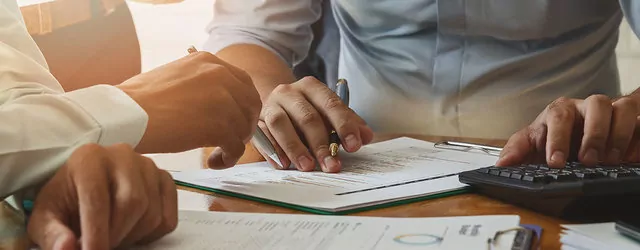
A divorce is the mechanism by which a marriage is legally ended. It does not determine how assets are divided between the couple. Sharing the matrimonial assets is decided separately. A financial settlement needs to be recorded in a financial remedy order, for it to be binding.
A pension is a matrimonial asset, regardless of whose name it is in, and its value and how it should be shared needs to be considered when dividing the assets. This is a complicated area and a report by a Pension on Divorce Expert may be required.
The treatment of your pension in a divorce or dissolution of a civil partnership will vary depending on several factors, including your age, when you plan to retire, the value of the pension funds you each have, the value of other assets you have, length of time you were married, how each member of a couple has contributed to the marriage (including bringing up children), when the pensions were accrued and any prenuptial or postnuptial agreements you may have in place.
What do you need to consider in relation to pensions during a divorce?
Valuation
The first step is to determine the value of the pensions. This is often referred to as the CETV (Cash Equivalent Transfer Value) or CEV (Cash Equivalent Value) for divorce purposes. You need to request this information from the pension administrator of the pension fund, and it could take several months for them to produce.
Disclosure
Both you and your spouse need to each disclose the CETV or CEV to one another, and consideration will then be given as to whether a pension sharing order is needed. It should be noted that having a similar CETV or CEV, does not necessarily mean the same income will be produced at retirement. The type of pension scheme and scheme rules need to be considered alongside the CEV or CETV.
Experts
Pensions are complex and, for this reason, once we consider the CEV’s we may recommend you seek the instruction of a PODE (pension expert on divorce). A PODE is usually instructed at joint instruction and joint expense.
Negotiate
The PODE will advise on what pension sharing orders are required for equalisation of pension income and the amount needed for capital offset (if requested in the instructions). The report often sets out various options for the parties to consider. The parties then need to negotiate how pensions should be shared. If the parties cannot agree, a court application may need to be made (if the parties are not already in court proceedings).
Tax Considerations
The division of pension assets can have tax implications, so it's important to consult with a financial advisor or tax professional to understand these consequences.
Financial Advice
You need to seek independent financial advice from an IFA (Independent Financial Advisor) as to the impact a pension sharing order will have upon your pension, if its your pension being shared. If you are the person in receipt of the pension sharing order, you need to seek advice as whether you need to set up or a new fund or which of your existing funds should be used, for receipt of the pension you will receive. The pension sharing order cannot be implemented until the pension administrators know where the pension fund is to be transferred.
Implementation
It is very important that if you receive a pension sharing order it is implemented. It is not automatic. The pension administrators need to be served and they should confirm when the process has completed. They may request that a fee is paid to implement the order.
How are pensions split during a divorce?
We would always recommend speaking with a solicitor or financial advisor before deciding on how you will split your pension as it is a very complex area.
Here are some options that may be available depending on your circumstances:
- Pension Sharing Order – this is a formal agreement providing a clean break at the time of the divorce because pension assets are split immediately. This is legally binding and the Pension Sharing Order instructs the Pension Providers to transfer the percentage value to the party who is benefitting from the order.
- Pension Attachment Order - essentially a form of spousal maintenance where part or all of a person’s personal pension is redirected to their ex-spouse upon retirement.Attachment of pension payments are made in either regular payments, a lump sum or a combination of both and come from the pension fund at source rather than from the fund holder.
- Pension Offsetting Order - Pension offsetting is where the current value of a pension is offset against another asset such as the house.
If an agreement can be reached out of Court then your divorce solicitor will draw up a consent order giving full details of the agreement reached. Both parties sign this agreement and it is then sent to the Court for a Judge to check it is reasonable before the Court endorses it as a legally binding order.
The ideal solution is for an amicable financial divorce settlement agreement (which includes your pensions) to be reached by negotiation between both parties and their divorce solicitors. This will help to minimise legal fees and avoid the necessity of going to Court to reach a divorce settlement.
If you would like to speak to a Family Lawyer regarding your Financial Settlement then please email info@bannerjones.co.uk or call us on 0330 017 6309

- Director
- Solicitor
- Head of Family Law

